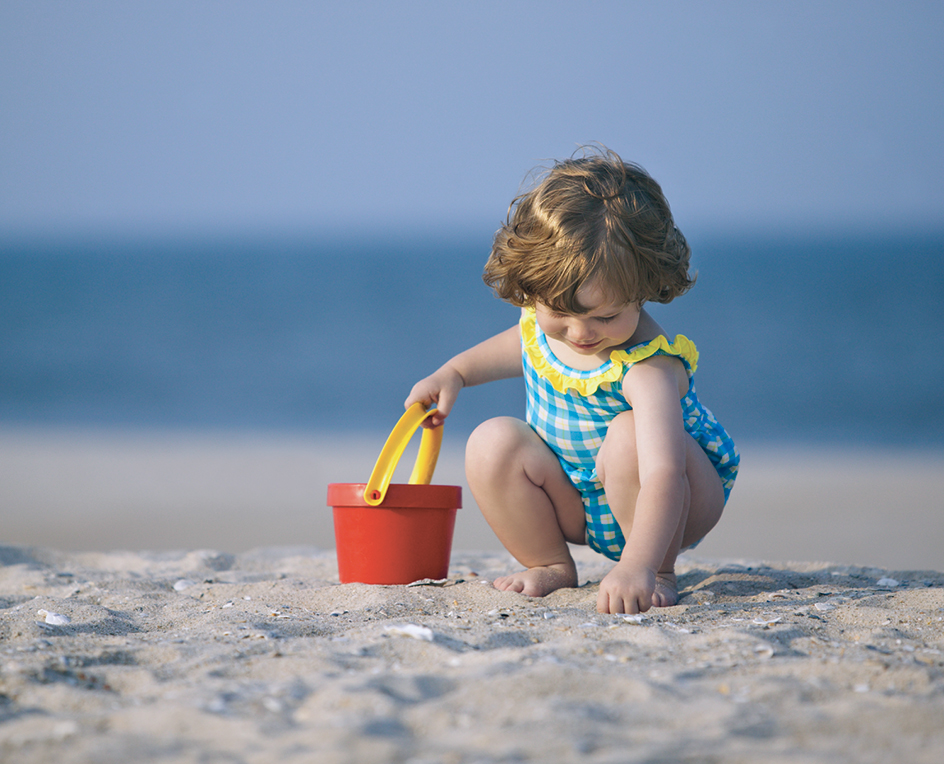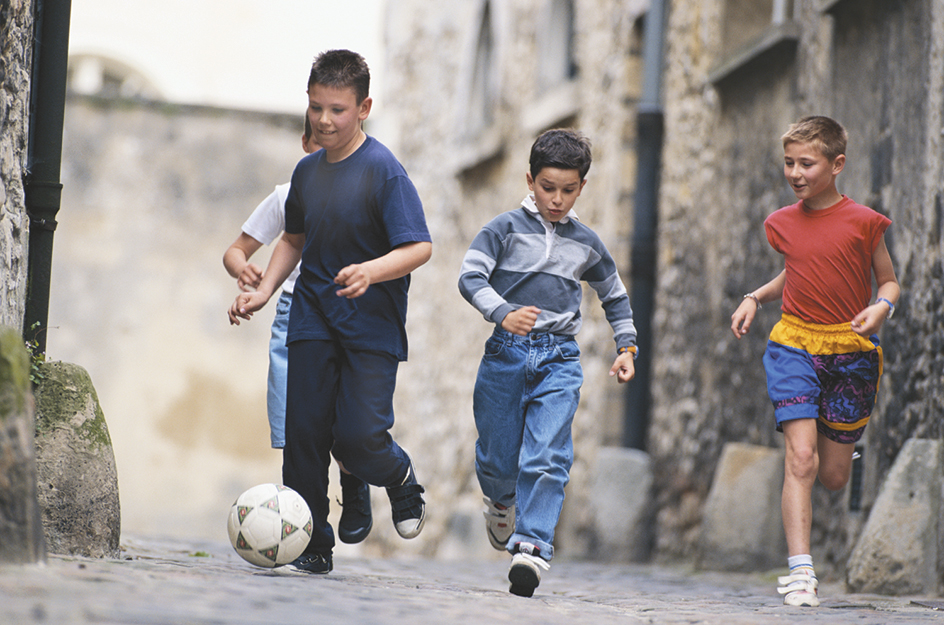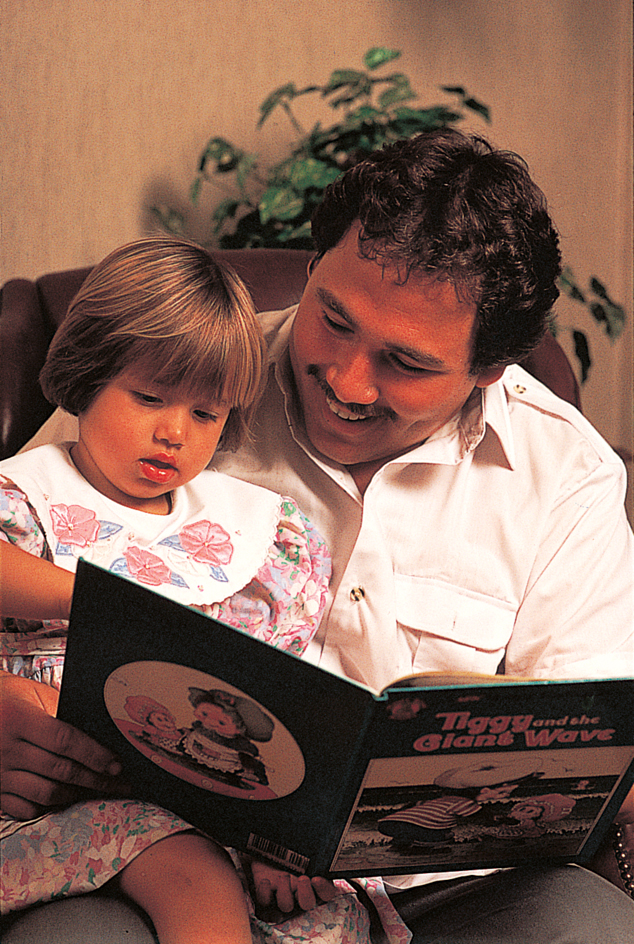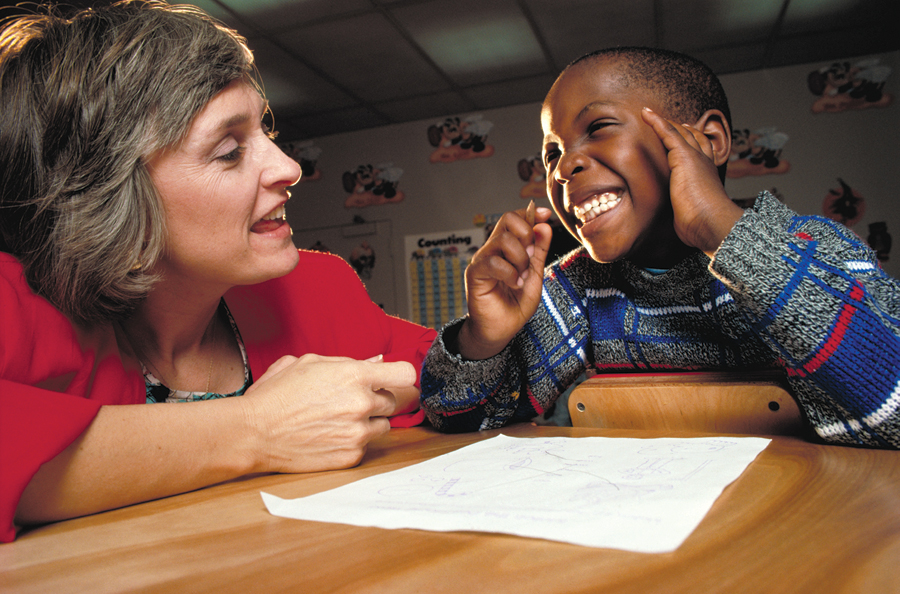Child is a person between the ages of about 18 months and 10 to 12 years. Childhood is the period of development between infancy and adolescence. Infancy extends from birth to about 18 months of age. Adolescence begins at about 10 to 12 years and lasts until young adulthood. For information on development during infancy, see Baby. For information on development during adolescence, see Adolescent.
Childhood is a period of transformation that involves a variety of physical, psychological, and social processes. These processes largely determine the type of adult that a child will become. During childhood, most boys and girls nearly double in height and quadruple in weight. They also begin to develop sexually. But childhood involves far more than physical growth and development. It involves significant changes in a child’s behavior, thought processes, emotions, and attitudes. Parents, siblings (brothers and sisters), and other family members traditionally play vital roles in guiding a child’s development. But as childhood progresses, boys and girls become increasingly independent and responsible for their own well-being.
Cultures throughout the world differ in their attitudes, beliefs, and traditions relating to childhood. Some cultures, for instance, define childhood as the period that lasts from birth until sometime past the age of 20. Some of these cultures do not recognize infancy and adolescence as distinct stages of development. Cultures also differ in the skills, values, and personality traits that they seek to develop in children.
Every child is a unique individual, with his or her own talents, characteristics, personality, and background. Despite these differences, many of the basic stages, experiences, and challenges of childhood are similar throughout the world.
The stages of childhood
Experts studying human development have used a variety of methods for dividing childhood into stages. Some experts separate childhood into stages based on changes in the ways children think or acquire skills. Others identify stages based on periods of major physical or social development.
This section examines childhood in three stages: (1) the toddler stage, (2) the preschool years, and (3) the school-age years. Within this framework, the section will discuss the major physical, social, and behavioral changes that take place throughout childhood. It will also follow the child’s movement through the four stages of mental development identified by the Swiss psychologist Jean Piaget. Piaget’s stages are (1) the sensorimotor period, (2) the preoperational period, (3) the period of concrete operations, and (4) the period of formal operations.
The toddler stage,
or toddlerhood, marks the end of infancy and beginning of childhood. It lasts from about 18 months to 3 years of age. By the start of the toddler stage, most children can feed themselves, walk and run a short distance, and say a few meaningful words.

As they begin toddlerhood, children are still in the sensorimotor period, the first of Piaget’s stages of mental development. During the sensorimotor period, children gain a basic knowledge of objects through their senses. They spend much of their time playing and experimenting with various actions and movements. For instance, a toddler might drop a toy to see how such an action impacts his or her surroundings.
Around the age of 2, children enter what Piaget called the preoperational period. During this period, which lasts until about age 7, children develop such skills as drawing and language ability. By 3 years of age, most children can link several words together to form fairly complete sentences. Their vocabulary during this period grows by about nine words a day.

Another major development during toddlerhood involves the child’s awareness of himself or herself as an individual and as a member of a family. Most toddlers take comfort in their family connections and seek the approval of their parents and other adults. Outside of the family, toddlers’ social relationships develop gradually, with some children more outgoing and engaging than others.
The preschool years
extend from about 3 to 5 years of age. By this stage, the child’s brain has grown to about 80 percent of its adult size. Preschoolers have a remarkable capacity for learning and constantly explore the world around them. The toddler stage and the preschool years belong to the period known as early childhood.
During the preschool years, children continue to advance through the preoperational period of mental development. They gradually develop their understanding of time, space, symbols, and other concepts. The use of such concepts enables children to engage in more sophisticated thought processes. Preschoolers learn new words every day, and their vocabulary grows to between 8,000 and 15,000 words by the time they are 6 years old. They also have significant improvements in motor development and hand-eye coordination.
Children at this stage begin to identify themselves with particular roles within the family and the community. They learn that there are certain standards of behavior—that is, things they should and should not do. Specific standards vary from culture to culture, but many are common throughout the world. Children are generally expected to be obedient, truthful, and respectful toward those around them. During the preschool years, children are also expected to develop control of their bowels and bladder, through a process called toilet training. In most societies, children learn the basic standards of behavior by the age of 5.
As early childhood progresses, children start building more fully developed social relationships. Preschoolers begin to recognize how they are similar to, or different from, other individuals. The play activities of toddlers are often solitary in nature, but preschoolers increasingly play with other children. Early schoollike settings—such as nursery schools and day-care centers—provide a wide range of intellectual and social experiences.
The school-age years.
In the United States, Canada, the United Kingdom, and most other developed countries, children start school at about 5 or 6 years of age. The years from about age 5 to 8 are often called the early school years. The years from about age 9 to 12 are called the preteenage years. Many experts describe the school-age years from about age 7 to 11 as middle childhood, because they represent the period between early childhood and adolescence. Most children in developed countries remain in school well into adolescence.
The early school years
mark a major turning point in childhood. This period brings important advances in mental, emotional, and social development. Children also continue to improve their physical skills during this stage.
Around age 7, children enter the period of concrete operations, the third of Piaget’s stages of mental development. During this stage, which usually lasts until about age 11, children develop the ability to think logically. They learn to organize their knowledge, classify objects, and solve problems. For instance, a 5-year-old child might try to solve a problem by choosing the first solution that comes to mind. But a child in the period of concrete operations thinks about several possible solutions and considers why one is better than another.
Before the period of concrete operations, the child’s manner of thinking is largely egocentric—that is, the child’s thought processes are limited to his or her own point of view. Around the age of 7, however, the child becomes increasingly able to distinguish his or her point of view from the points of view of others. The decline in egocentrism helps children evaluate situations from multiple perspectives. It also helps them understand and communicate with others.
During the school-age years, children receive formal instruction and become active members of social groups outside the family. Children also increasingly compare themselves with other youngsters. Such comparisons contribute to a child’s self-image (the view one has of oneself) and self-esteem (the way one feels about oneself).
The preteenage years,
sometimes called preadolescence, begin the transition into adolescence. During the preteenage years, the rate of physical growth increases sharply. Most girls grow rapidly between the ages of 9 and 12. Girls are normally heavier and taller than boys during these years. At about age 12, however, most boys start to grow rapidly, and the girls’ growth rate declines. By early adolescence, most boys are heavier and taller than most girls their age.
As preteens grow, they begin to develop the sexual characteristics of adults. The period during which a person matures sexually is called puberty. Some children reach sexual maturity before age 13. But others do not become sexually mature until adolescence.
The preteenage years are an especially important period of social development. During this stage, a child’s circle of friends and acquaintances, or peer group, plays an important role in the child’s life. Preteens begin to look chiefly to their peer group, rather than to their parents, for acceptance and approval. A child’s behavior may change noticeably under peer pressure—that is, social pressure and expectations from people of the child’s own age.

During the preteenage years, the child’s manner of thinking continues to develop. Around the age of 11, children enter the period of formal operations, the fourth of Piaget’s stages of mental development. During this period, children begin to think reasonably about the future and learn to deal with abstractions. Abstractions are ideas about qualities and characteristics viewed apart from the objects that have them. The growing complexity of the child’s thought processes helps prepare the child for the challenges of adolescence and adulthood.
Individual differences among children
Children vary greatly in appearance, behavior, personality, and other characteristics. Two main forces—heredity and environment—account for individual differences among children. Heredity is the process by which children inherit physical and mental traits from their parents. Environment consists of all the factors in a child’s surroundings that affect the child’s development. Such factors include relations with family members, lessons and activities at school, nutrition and exercise, and interactions with people in the community.
This section examines the physical, psychological, and cultural characteristics that make every child unique.
Physical differences
include differences in appearance, physical ability, and rate of growth. Many children experience physical growth and development months or years earlier or later than most others. In addition, individuals vary greatly in body type, coordination, and athletic ability.
In general, heredity limits what the environment can do in influencing a child’s physical development. For example, every child inherits a tendency to grow to a certain height. But children need the right conditions—including proper nourishment and exercise—to grow as tall as their heredity allows. Not even the best environmental conditions will enable a child to grow much taller than this height. In some cases, sickness or disease can limit a child’s development.
Psychological differences
involve differences in the ways children think, learn, and behave. A child’s temperament (emotional make-up and manner of behavior) is apparent during infancy and becomes increasingly established throughout childhood. Children possess varying degrees of such qualities as anxiety, sociability, moodiness, and aggression. Many of the traits or tendencies of a child’s temperament are inherited from parents and influenced by environmental factors. Such factors include school experiences and interactions with parents, siblings, and friends.
Intelligence—often defined as the ability to adapt to the environment—is another quality that varies from one child to another. Children who are highly intelligent can learn quickly and understand what goes on around them. Many experts believe that general mental ability is mostly inherited. Others, however, believe that environment has a strong influence on a child’s intelligence. Most of what is considered intelligent behavior involves a complex interaction of heredity and environment. See Intelligence.
Traditionally, differences in intelligence among children have been measured by IQ (intelligence quotient) tests (see Intelligence quotient). These tests are designed to indicate a child’s general mental ability in relation to other children of the same age. However, many experts argue that intelligence has many dimensions that cannot be accurately measured by a single test. For instance, the American psychologist Howard E. Gardner suggested in the 1990’s that there are eight distinct “intelligences,” including linguistic intelligence, musical intelligence, and interpersonal intelligence (the ability to get along with others). A child may have below-average intelligence in some of these areas but exceptional intelligence in other areas.
Cultural differences
result from the beliefs, customs, arts, languages, technology, and conditions that surround the child as he or she develops. Every nation has a national culture. But, within each nation, there are various cultural groups with their own distinct sets of values and traditions. Cultural factors greatly influence children’s social behavior, manner of dress, religious beliefs, and style of learning.
People are not born with cultural knowledge. Instead, they acquire the knowledge through the use of language and by watching and imitating behaviors in society. The process by which children learn about their culture is called enculturation.
All societies have specific ideas about what abilities, behaviors, and characteristics are considered “normal” for children. In many developed countries, for example, children are expected to attend schools and learn how to read and write. In less developed countries, however, children may instead learn skills needed for farmwork or household chores. Societies also differ in the values and personality traits that are emphasized in children. For instance, in many Western nations, such traits as competitiveness and independence are encouraged. In many other countries, however, these traits are considered abnormal. The roles of parents and educators vary depending on the skills and characteristics that children are expected to develop.
The role of family
The family is the basic unit of social organization in all human societies. It is the primary institution responsible for raising children, providing them with food and shelter, and satisfying their needs for love and support. The responsibility of caring for children and helping them develop is commonly called child-rearing. Parents typically play the central role in child-rearing. However, in many households, aunts, uncles, grandparents, family friends, and other caregivers are actively involved.
Parents and caregivers can guide a child’s development in a variety of ways, including (1) understanding the child’s basic needs, (2) motivating the child’s behavior, and (3) serving as models of appropriate behavior. In addition, siblings play a major role in the development of many boys and girls.
Understanding the child’s basic needs.
Every child has basic physical and psychological needs that must be met if he or she is to develop normally. Parents are expected to understand and satisfy these needs.
Basic physical needs.
Children need nourishing meals, proper clothing, and a clean, comfortable home. They also require a reasonable amount of play and exercise. In addition, parents should teach their children good health habits and standard safety practices to reduce the risk of diseases and injuries.
Parents should also ensure that their children receive regular medical check-ups and proper health care. In the United States, most children get their first immunizations—vaccinations against such diseases as diphtheria, polio, tetanus, measles, and mumps—before 18 months of age. Most experts recommend that children be reimmunized at 4 to 6 years of age.
Basic psychological needs.
Children need to feel loved, wanted, and respected by parents and other family members. They need close contact with adults whom they like and admire. Such contacts help promote normal emotional development. Parents assist and encourage young children as they develop language ability and other skills. When parents make a practice of reading to children during the toddler and preschool years, the children are more likely to achieve success in school.

Motivating the child’s behavior.
Parents motivate a child when they encourage the child to adopt a certain type of behavior. Parents might use rewards to reinforce good behavior and punishments to discourage bad behavior. Appropriate rewards and punishments vary depending on the child’s age, the type of behavior, and other circumstances. Rewards for good behavior may include a word of praise, a hug, the gift of a toy, or a special privilege. Special privileges typically involve activities the child enjoys, such as watching television, playing video games, or visiting a favorite store or park. Punishments may include a strong “no,” a scolding, or the removal of privileges.

Some parents and child-rearing experts believe that mild corporal (bodily) punishment—such as light slapping or spanking—can be effective in disciplining a child. However, others believe that such punishments should never be used. Many experts believe that corporal punishment will likely lead to increased resistance or aggressive behavior from the child.
By making sure that children understand the reasons for punishments, parents help children learn better standards of behavior. Children are likely to be upset if they feel they are being punished unfairly or too severely. Punishments that make children feel unloved or unwanted do not promote healthy development.
Serving as models of appropriate behavior.
Because children closely identify with their parents, parents should seek to provide good examples of how to act. The things parents do and say—and the ways they do and say them—strongly influence a child’s behavior and sense of right and wrong. Parents’ actions also affect a child’s self-image. Children who see mainly good qualities in their parents will likely learn to see themselves in a favorable way. Children who observe bad qualities in their parents may have difficulty seeing good qualities in themselves.
In addition to serving as examples themselves, parents monitor and supervise other factors that influence their child’s attitudes and behavior. Such factors include interactions with friends, peers, and teachers, as well as books, music, video games, and television. Parents can shape and monitor a child’s television habits and encourage the child to discuss the programs that he or she views.

The influence of siblings.
In many families, older siblings act as teachers, caregivers, and role models for their younger brothers and sisters. Siblings also serve as friends and peers. The nature of a sibling relationship depends largely on the individual characteristics of the siblings. Although siblings have much of the same genetic make-up, they can vary greatly in personality and temperament. A relationship in which siblings cooperate and help one another helps each child’s development. However, quarrels, rivalries, and disagreements between siblings are common. Parents address conflicts between siblings, teach them to manage their emotions, and help them resolve their differences. Sibling relationships help children develop important social skills that they will use in later stages of life.
The influence of the child’s environment
Although the family is the traditional center of the childhood experience, numerous other people, places, conditions, and events contribute to a child’s development. Children do not grow up in isolation. Instead, they experience a wide range of meaningful and complex interactions with their environment.
The Russian-born American psychologist Urie Bronfenbrenner examined these interactions using his bioecological model of human development. The model, introduced in 1979, presents the child’s environment as four interconnected layers: (1) the microsystem, (2) the mesosystem, (3) the exosystem, and (4) the macrosystem.
The microsystem,
the innermost layer of Bronfenbrenner’s model, consists of the people, places, and institutions in the child’s immediate environment. The child’s family is at the center of the microsystem. But the system may also include teachers, doctors, and peers, as well as such places as schools, playgrounds, and day-care centers. Elements of the microsystem regularly and directly affect the child’s life.
The mesosystem
is the complex system of interactions between various elements of the microsystem. These interactions can have a significant impact on a child’s development. For example, meetings between a child’s parents and teachers can strongly affect the child’s happiness in school and at home.
The exosystem
involves factors that exist beyond the child’s immediate environment yet still affect the child. Elements of the exosystem include parents’ workplaces, community organizations, social and health services, and school boards. The mass media—including television, motion pictures, the Internet, and advertising—are also an important aspect of the exosystem. Elements of the exosystem can have a powerful, though often indirect, influence on the child’s life. For instance, a child may not be directly involved with a parent’s workplace, but the child’s life will be affected if a parent is promoted, laid off, or asked to work overtime.
The macrosystem
is the broad cultural context in which the other systems operate. It involves such elements as government policies, economic conditions, and world events. For instance, government policies regarding education and health care affect the conditions of a child’s development.
World events in the macrosystem can drastically alter a child’s surroundings. A war, for instance, can threaten a child’s safety, emotional well-being, and access to food and shelter. Similarly, a major economic slump can force children to live under conditions of poverty, where many of their needs cannot be met.
Special challenges and concerns
Many children face significant problems and obstacles in the course of development. A number of childhood problems may result from physical or psychological disorders. However, many are normal aspects of the childhood experience. Common childhood concerns include (1) emotional problems, (2) physical disabilities and challenges, (3) obstacles to learning, (4) social problems, (5) aggressive behavior, and (6) problems in the home. Most children can overcome their challenges with the help of parents, friends, and others, or through special therapy or assistance programs.
Emotional problems.
One of the most common emotional problems in children is depression. Depression is a condition in which a child suffers long periods of sadness and other unpleasant feelings. Depressed children may feel fearful, guilty, or helpless. They often cry, and many lose interest in school and other activities. Treatments for depression include hospitalization, medication, and psychotherapy (psychological treatment).
Some children suffer from unrealistic fears—that is, fears that occur regularly in the absence of real danger. In many cases, such fears can interfere with a child’s everyday activities. Some fears are directly related to a frightening past experience. For example, a child who has been attacked by an animal may develop an unrealistic fear of all animals. Children who experience such fears may benefit from professional counseling.
Physical disabilities and challenges.
A disability is a condition that affects a child’s ability to perform the activities of everyday life. Common physical disabilities include blindness, deafness, deformity, loss of limbs, and muscular, nervous, and sensory disorders. A physical disability may make it difficult for a child to perform daily activities, such as dressing, eating, and maintaining personal hygiene. However, with assistive (aid-giving) devices and help from others, most children with disabilities can have a healthy and fulfilling childhood.
Many children develop health problems that can increase the risk of illness later in life. Obesity is the condition of having an excessive amount of body fat. Obesity is influenced by both hereditary and environmental factors. Two of the main environmental factors are unhealthy eating habits and physical inactivity. Children who spend large amounts of time watching television are more likely to develop weight problems than children who are more active. Parents, teachers, and others can help children improve their physical health by demonstrating and encouraging healthy eating habits and providing regular opportunities for exercise.
Obstacles to learning.
One of the central tasks of childhood is to advance in school and become a successful learner. However, many children face barriers to learning. In some cases, the barrier is a psychological condition that interferes with the child’s ability to pay attention in class, develop skills, or understand concepts. In other cases, the barrier is a feature of the child’s environment. For instance, the child might attend a school that lacks the resources needed for effective instruction.
Learning disabilities
are disorders that limit a child’s ability to learn. They can interfere with the development of such skills as concentration, coordination, language, and memory. Attention deficit disorder is a condition in which children have unusual difficulty paying attention, sitting still, or controlling impulses. The formal term for attention deficit disorder is attention-deficit/hyperactivity disorder (ADHD). Difficulties in school may also result from emotional disturbances, intellectual disability, or poor hearing or vision. Therapies, medication, assistive devices, and specialized teaching techniques can help children overcome most physical and psychological conditions that interfere with learning.

Social problems.
A child may have difficulty making friends or establishing social relationships if he or she differs from his or her peers in certain ways. For instance, a child with a physical disability might become socially isolated from—or even ridiculed by—other children. A child might also become isolated if he or she performs poorly in school activities or differs greatly from classmates in terms of social class or cultural background. In some cases, a child might become socially isolated if he or she displays exceptional talent in a particular area.
Children who have difficulty building friendships may become victims of bullying. Bullying is the repeated use of aggression by one or more people against another person or group. Bullying may involve name-calling, pushing or hitting, or preventing an individual from participating in an activity. Bullied children may experience anxiety, low self-esteem, difficulty sleeping, or other problems. School policies, parental supervision, and open communication between children and trusted adults can help address problems with bullying. Both bullies and victims need attention to resolve these problems.
Aggressive behavior.
Some children develop patterns of aggressive behavior that are a problem to themselves and to the people around them. Such behavior can result from the frustration children feel when their feelings of worthiness and self-respect are threatened.
Most children learn to control aggression by channeling their energies into hobbies, sports, schoolwork, and other activities. Some children, however, do not learn to deal with aggression effectively. Instead, they relieve feelings of frustration through antisocial behavior, such as stealing, bullying, or destroying property. Such forms of behavior worsen if the peer group encourages them.
Problems in the home
often involve strained or unhealthy relationships between family members. One of the most severe childhood problems is child abuse—that is, mistreatment of a child by a parent or another adult. Child abuse may take the form of physical violence or any other treatment harmful to the child. Many experts believe that abused children will more likely become abusive as adults, a development sometimes called the cycle of abuse. Family members, friends, and neighbors—as well as people in the medical, psychological, social, and legal professions—have a responsibility to report any suspected cases of abuse to a government authority.
Violence in the home can harm a child even if the child is not the target of the violence. Domestic violence—that is, abuse between marital partners or other adults in close relationships—is a major source of emotional and psychological distress in children.
When parents divorce, the children usually live with either the mother or the father. Divorce breaks apart the family unit and affects many children deeply. However, many experts believe that living with one parent is less harmful to a child than living with both parents in an unhappy environment.
